
Beekeeping smoker maintenance
January 10, 2024 Dan Wyns, Meghan Milbrath, Ana Heck
A little basic maintenance goes a long way for keeping your beekeeping smoker functioning well. Through regular use and through the burning of fuel, parts of the smoker can get gummed up with layers of tar and creosote that need to be removed and some parts can wear out. Periodic cleaning and maintenance will keep your smoker in good shape and puffing smoke for years to come.
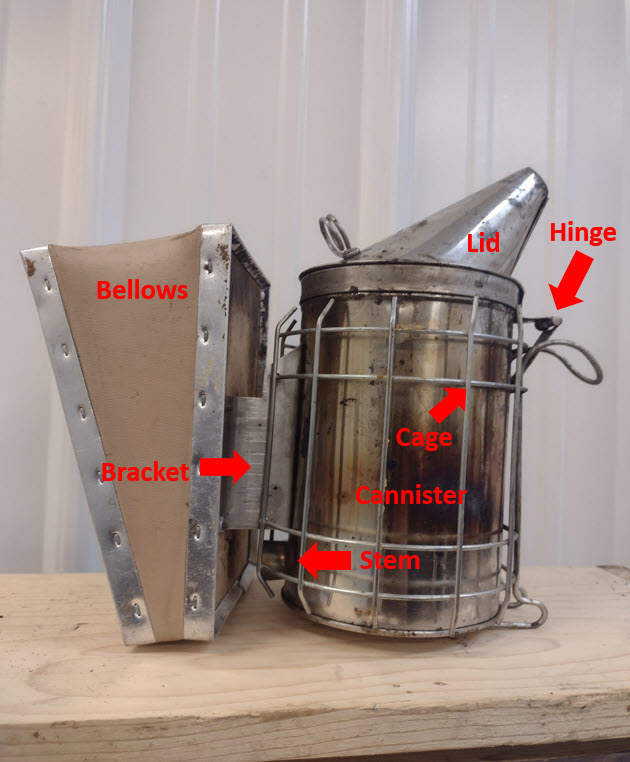
You only need a few basic tools to maintain your smoker, including a torch, pliers, wire brush, wire, and a wrench. A pair of gloves is also useful to handle the hot and dirty surfaces of the smoker while working.
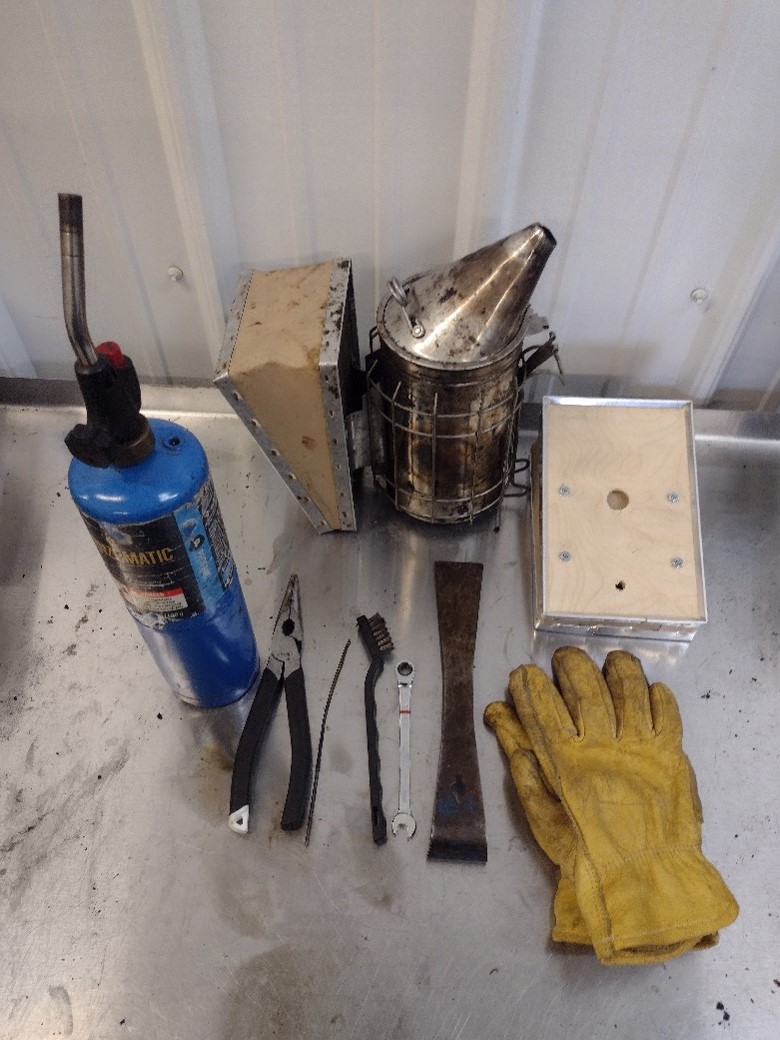
Buildup on the interior of the lid and top of the canister can make it difficult to open and close the lid. You can clean the accumulated creosote and tar by burning it with a hot torch and then clearing it with a wire brush.
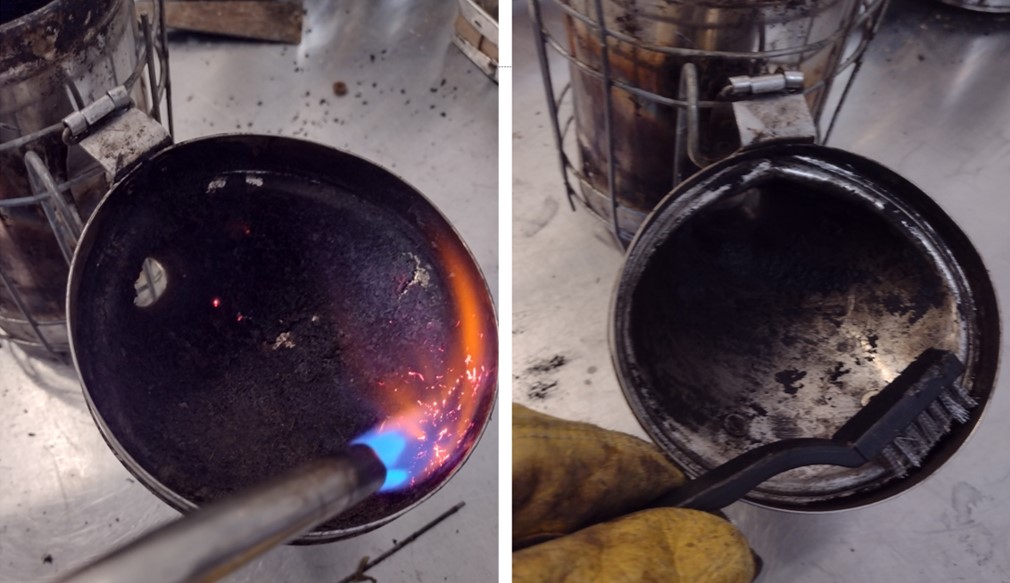
Next, check the stem - the metal tube that allows air to flow from the bellows to the cannister. If the stem is blocked or misaligned, the canister may not get enough air from the bellows and your smoker will be harder to start and keep lit. Any misalignment of the stem should be straightened with your pliers, so it lines up with the hole in the bellows. Tar buildup is easily removed by burning it with a torch and clearing debris with a piece of wire.
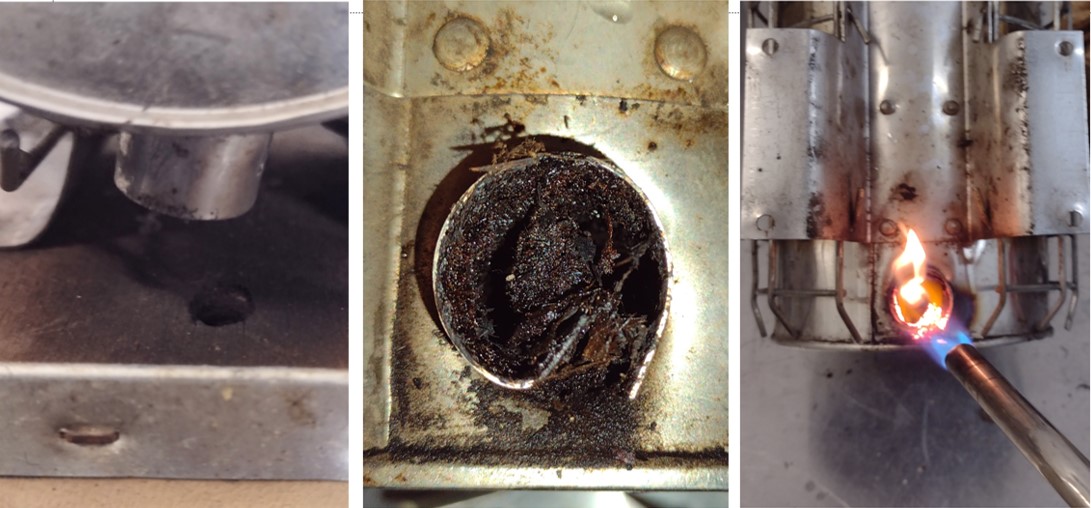
Another place that can cause blockages to airflow is the grate in the bottom of the cannister. The grate can be removed with pliers and cleaned with the torch to clear any blocked holes. Before replacing the grate, dump out any small debris and ash that has accumulated at the bottom of the cannister.
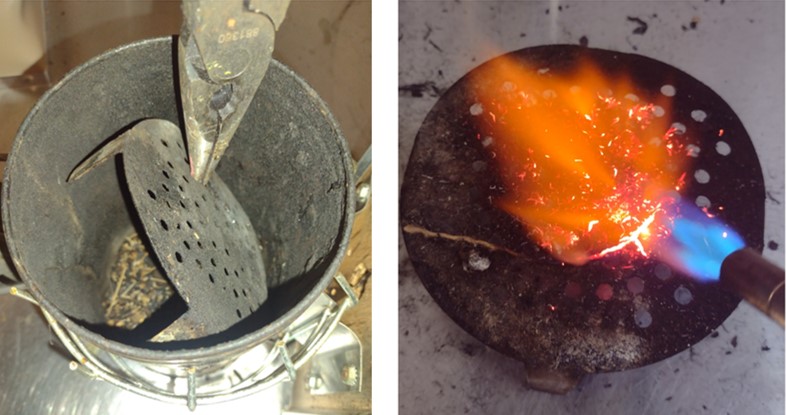
Once your smoker is cleaned, you can check for things that may need to be repaired.
The first place to check is the hinge connecting the lid to the cannister. Smokers often loose the pin in this hinge, and it can be made more stable by adding a bent piece of wire. A thin trim nail or piece of wire can be fit into the hinge and bent to reattach the lid. If you don’t have wire or nails laying around, a couple of inches from a wire coat hanger works well.
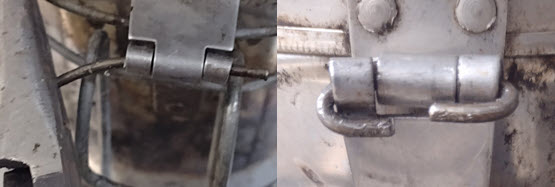
Next, squeeze the bellows to check for any cracks or holes that leak air. You can patch small holes with duct tape or a flexible adhesive like GOOP® but bellows with large holes or cracks should be replaced.
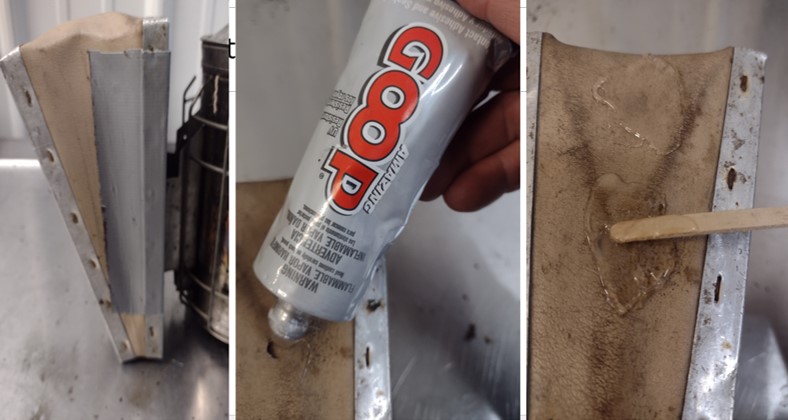
You can buy replacement bellows at many beekeeping supply stores, but make sure that you have the same style for remounting. The bellows are usually held to the cannister by four nuts or screws on the backside. Removing these nuts or screws allows the bellows to be changed out and provides easy access to the stem at the bottom of the cannister.

All photos by Dan Wyns.



 Print
Print Email
Email



